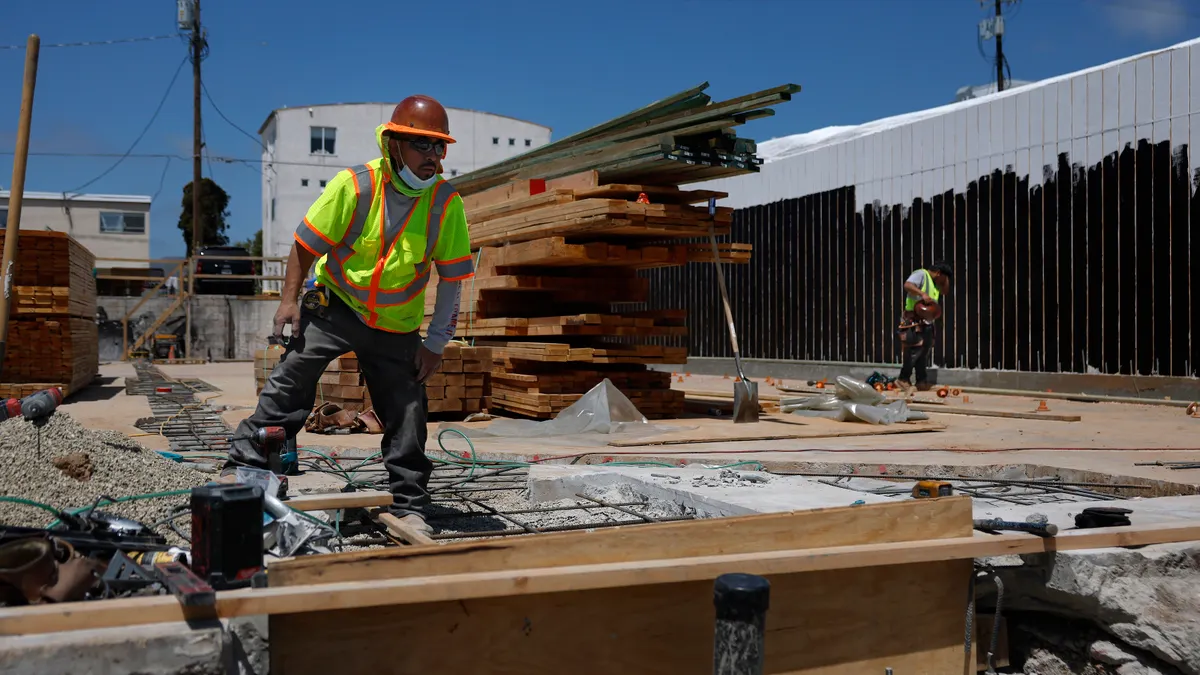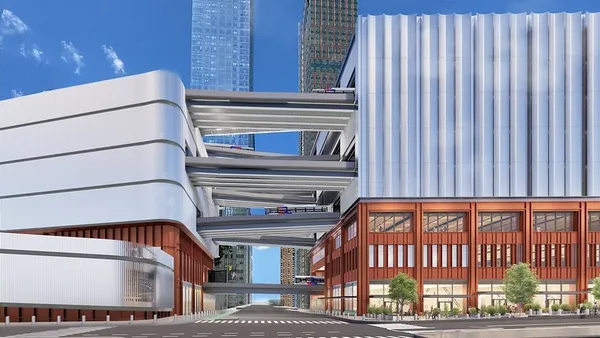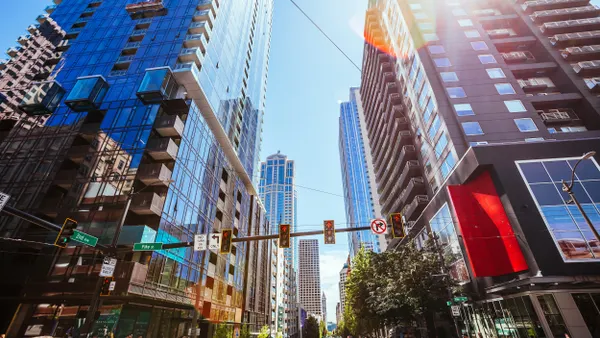Editor's Note: The following is a guest piece from Neil Golson, EVP of marketing and strategic partnerships at FlashParking.
The smart city picture is starting to come together: electric vehicles (EVs) are on the rise, micromobility is giving commuters an alternative to gridlock, city services are becoming dynamic and automated, and our electric grid is getting smarter and — as a result — more efficient.
Of all the sectors of the smart city model, mobility has been one of the most visible – and conflict-ridden. There is an ever-growing pool of ways that people, businesses, goods, and services travel from point A to point B. We've seen the emergence of e-commerce, e-scooters, EVs, and transportation network companies (TNCs), and anticipate the rise of autonomous vehicles (AVs) and drone delivery.
When they first emerged, these technologies started to resemble a utopian vision of mobility: tourists weaving down sidewalks on e-scooters, sustainable electric cars roaming the streets and shared vehicles picking up commuters conveniently at the front door.
But as more options for going the distance pop up, so do their disparate apps, operations and regulations for operating. Thus, with each new mode of mobility arises a new layer of complexity in our physical and digital landscapes. Unfortunately, our cities are not always apt to accommodate new ways of getting around, and at the rate that mobility is innovating today, the challenges to cities are mounting faster than many of them can keep up with:
- E-parking has modernized the process of finding a parking space by mapping out the availability and cost of both on-street and off-street parking and allowing users to reserve a spot ahead of time. But as soon as a driver arrives at their parking destination, they are met with antiquated access technology and clumsy wayfinding, and the convenience of the interaction immediately declines.
- Micromobility technologies today generally permit users to pick up and drop off devices like e-scooters wherever they please. However, the dockless nature of these devices has led to them being carelessly strewn across city sidewalks, cluttered in piles on street corners, and even tossed into lakes and public parks.
- EV technology has finally caught pace with consumer interest: sleek design and growing range have made EVs a more attractive option compared to traditional vehicles. However, the challenges associated with accessing EV chargers is still dissuading potential buyers. In 2016, a consumer survey revealed that price and driving range were the top factors discouraging EV purchase, followed by access to chargers (currently there is only 33,000 public chargers). However, falling prices and growing range are giving rise to charging access as the sole greatest barrier to EV adoption.
- TNCs have fundamentally changed the way we get around, but ride-hailing giants are still searching for a sustainable business model. TNC drivers today spend half of their miles driven without a passenger in the car, either waiting for their next ride or en route to a rider. Without a place to wait between rides, drivers end up circling city blocks, wasting excess fuel and creating congestion throughout the day.
What’s missing?
As more of these mobility technologies make waves in the urban landscape, it is getting crowded. New mobility and old mobility are colliding in the urban core: each new way of getting from A to B disrupts another, older mode of movement. How can we expect the relationship between new and old mobility to improve when fully autonomous vehicles further disrupt the marketplace? Or when delivery drones and robots begin swooping onto streets and sidewalks from the sky?
Currently, our streets, curbs and sidewalks are bearing the weight, leaving us with gridlock, pollution and cities that are certainly not "smart." Unless we change something now, those conditions will inevitably worsen as more and more modes of mobility make their way into our urban areas.
The cost
Commuters are some of the first to feel the effects of a broken mobility model. Congestion cost Americans $166 billion in 2018 as a result of lost hours and increased fuel consumption. Commuters sit in gridlocked traffic each morning and evening, wasting away hours of their day watching fumes escape from exhaust pipes and putting unproductive wear on their vehicles.
Business fleets are next. Delivery trucks are parked at the curb with their flashers on; service vehicles can’t break through bumper to bumper traffic; small business owners fail to establish the efficiencies they need to be profitable. In 2018, FedEx and UPS together racked up almost $50 million in parking fines trying to perform deliveries in New York City.
When every hour is rush hour, emissions rise and pollute the air and the cultures linked by a thriving city center are once again made disparate. Ultimately, our cities and communities pay the cost. In the United States, this amounts to around $87 billion in lost productivity from congestion — which doesn't include environmental costs, public health costs or other costs.
How can we shift the weight of new mobility off our streets to regain the utopian benefits of mobility and leave the dystopia behind? The answer lies in an unexpected place: parking garages and surface lots.
Parking assets
When new ways of getting from point A to point B began to materialize, parking garages and surface lots felt the reverberations of shifting consumer practices. The owners and managers of parking assets watched occupancy drop, revenues stagnate and momentum in growth come rolling to a stop.
For years, parking assets were a remnant of antiquated mobility, greeting drivers with sandwich board signs and demanding exact change at the exit. Considering that Americans spend an average of 17 hours a year searching for parking, it is no surprise that when more modern transportation and mobility options arose, parking garages and lots felt the impact. The hassle of driving, navigating to a garage, interacting with antiquated access tools and finding a parking space became too high of a cost compared to simply calling an Uber.
There is clearly an abundance of untapped value in the access and revenue collection alone, so much so that an entire industry has poised itself around generating efficiencies in garage and lot access. However, the unrealized potential of garages goes far beyond the access experience – it involves the entire user journey, the common practices we have come to accept and all the individual puzzle pieces that come together in the big picture.
Today, parking assets have an opportunity to realize their full potential by evolving, redesigning their infrastructure and resurfacing in the new mobility landscape. Modern mobility includes multimodal transport like e-scooters and e-bikes, EVs that demand charging and TNCs or public transport in addition to owning a car. It follows that assets serving our current mobility market would accommodate micromobility, provide charging stations and support staging for contracted drivers.
The final pieces of the puzzle: Mobility hubs
Parking assets are poised, physically, at the center of the mobility revolution. They also happen to have the excess capacity that the growing mobility ecosystem needs to get cars off streets, to get scooters off sidewalks and to get people moving forward instead of standing still. Parking assets equipped with the right technology, intelligence and connectivity can transform into hubs that meet modern mobility needs and unlock the full potential of the smart city.
The first piece that needs to be put in place to transform parking assets into mobility hubs is an extensible technology layer to regulate access, control revenue, and integrate high-tech user-facing features.
Intelligence is the next piece. Having total visibility across an asset portfolio offers insight into broader environmental factors like traffic patterns, surge times and mobility challenges. A data intelligence engine turns those data points into actionable analytics that can optimize daily operations with features like dynamic pricing and inform long-term strategy by evaluating opportunities in the mobility ecosystem.
To unlock their full potential, parking assets need to connect with value-added mobility service partners. A shared open-API platform is the foundation for forging these partnerships and allowing assets to seize new opportunities in the mobility market.
With the right operating system at their core, parking assets can be hubs that support every facet of new mobility rather than a single feature of old mobility: parking. When all the fixtures of new mobility converge inside garages rather than on streets, we can take lock out of the grid and put smart back into the city.

















